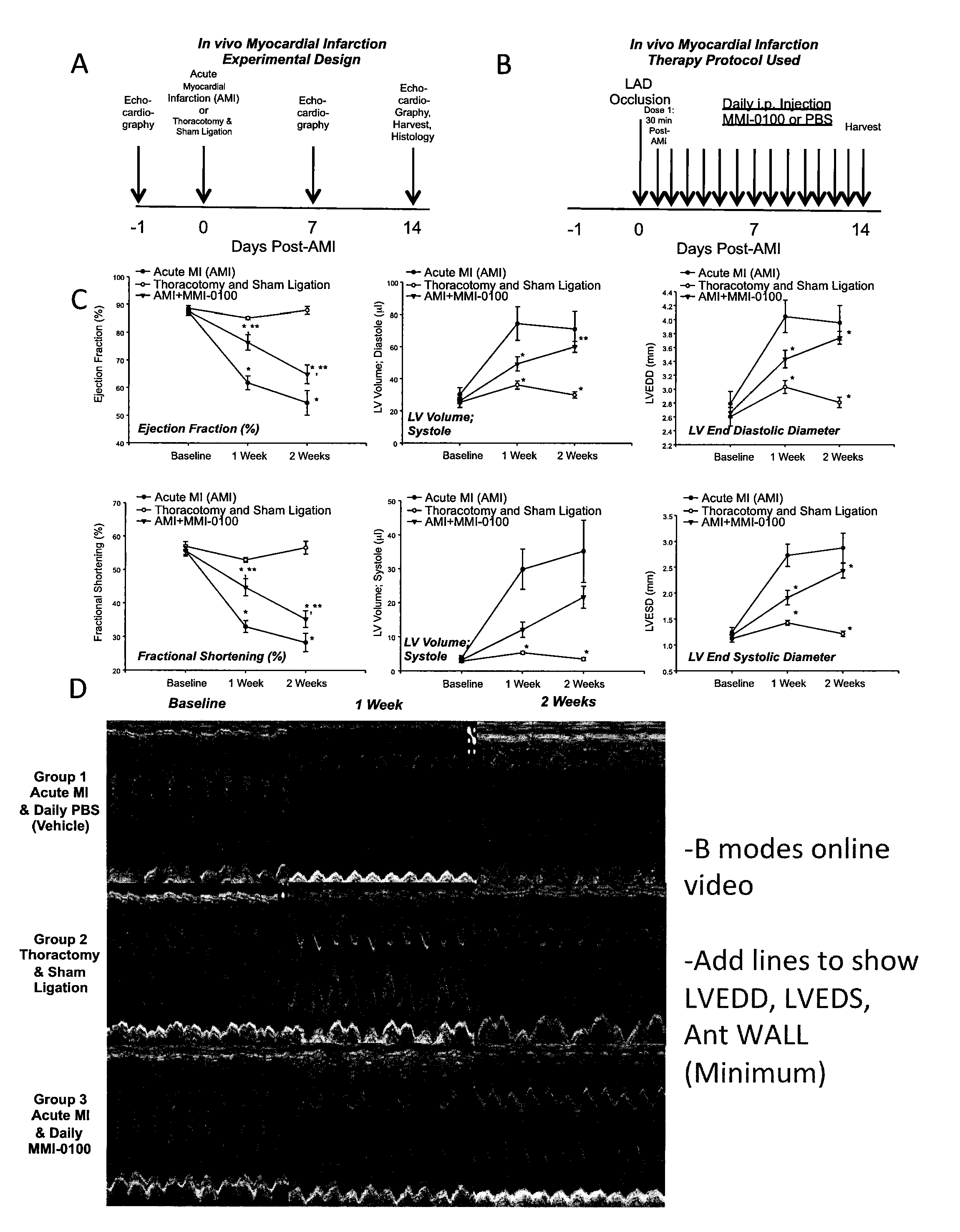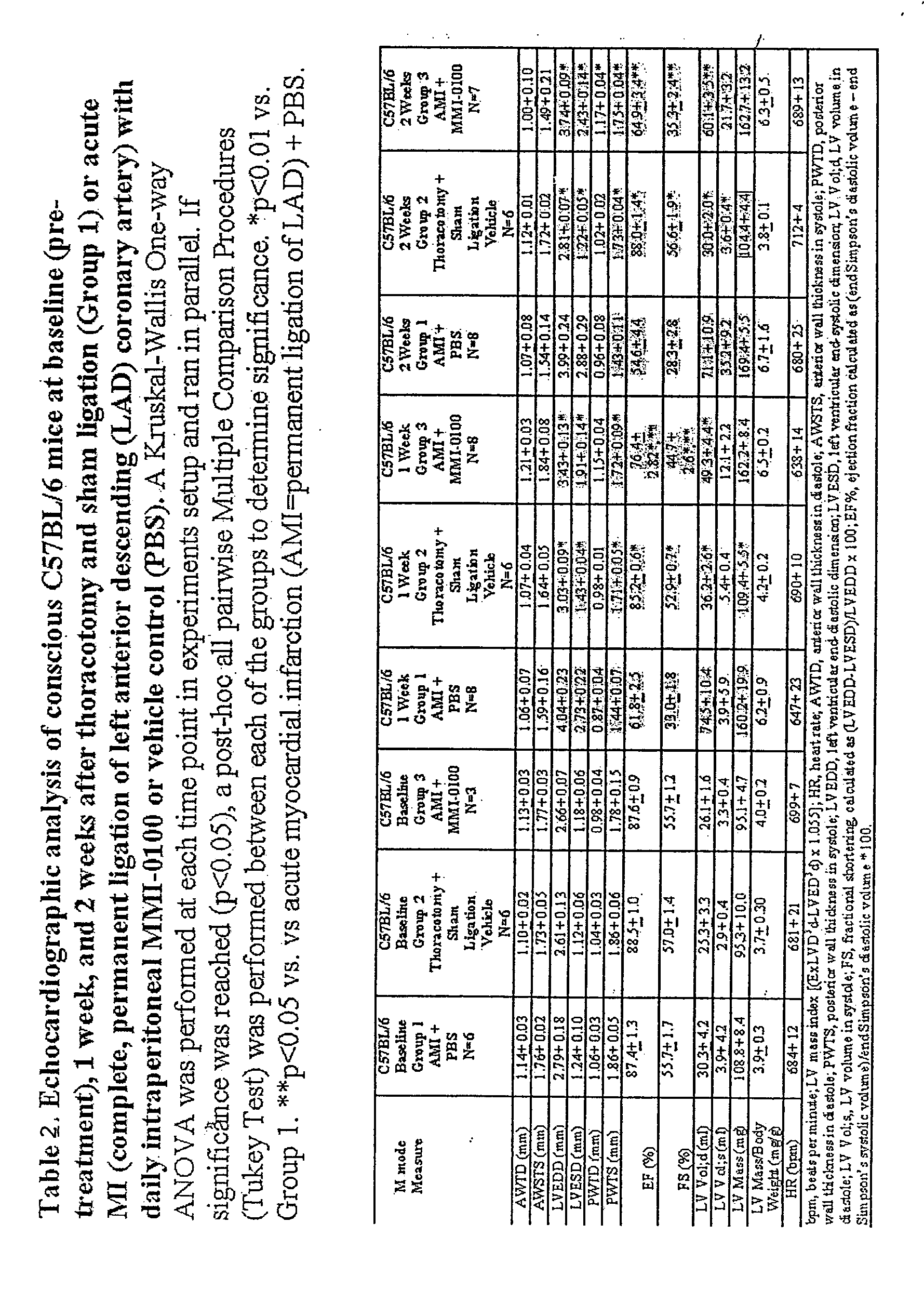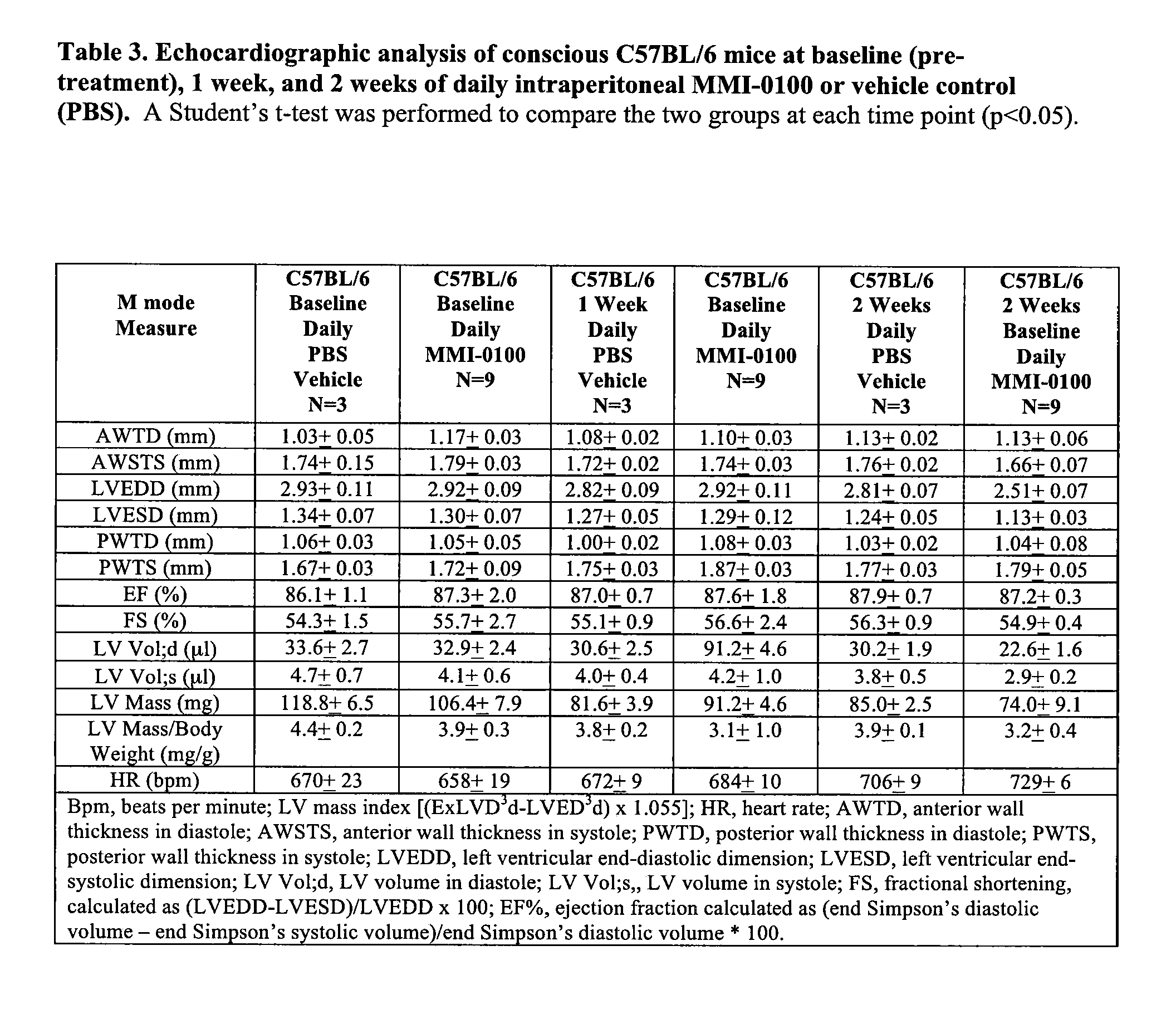Inhibition of cardiac fibrosis in myocardial infarction
a myocardial infarction and fibrosis technology, applied in the direction of peptides, drug compositions, peptides, etc., can solve the problems of increased morbidity and mortality, impaired cardiac function and heart failure, ischemia, etc., and achieve the effect of preventing the ischemia of the heart and preventing the ischemia
- Summary
- Abstract
- Description
- Claims
- Application Information
AI Technical Summary
Benefits of technology
Problems solved by technology
Method used
Image
Examples
example 1
Treatment of Acute MI with MMI-0100 Peptide Improves Cardiac Function and Heart Failure Measures In Vivo
[0347]In this study, acute myocardial infarction (AMI) was induced in eight to ten week old C57BL / 6 mice by permanent ligation of the left anterior descending (LAD) coronary artery in order to determine whether treatment of AMI with MMI-0100 peptide can improve cardiac function and heart failure measures in vivo.
[0348]Echocardiography was used to follow cardiac function and morphometry prior to the surgical induction of an acute myocardial infarction (AMI) induced by thoracotomy and ligation of the left anterior descending coronary artery in C57BL / 6 mice. Cardiac function was then followed at 7 and 14 days post-AMI (FIG. 1A). Mice were separated into three groups: (1) AMI treated with MMI-0100; (2) AMI untreated; and (3) a control group that underwent thoracotomy and sham ligation. Thirty minutes after the complete permanent LAD occlusion, the first dose of MMI-0100 was given at t...
example 2
Treatment of Acute MI with MMI-0100 Treatment Decreases Cardiac Fibrosis In Vivo
[0350]Myocardial infarction triggers an inflammatory reaction that results in the formation of a scar. Healing from myocardial infarction is associated with alterations in the left ventricle, including dilation and hypertrophy [Bujak M, Frangogiannis N G. The role of TGF-beta signaling in myocardial infarction and cardiac remodeling. Cardiovascular research. 2007; 74:184-95]. In the early stages of an acute MI, TGF-β has been proposed to play a role in deactivating macrophages and suppressing endothelial cell cytokine synthesis [Bujak M, Frangogiannis N G. The role of TGF-beta signaling in myocardial infarction and cardiac remodeling. Cardiovascular research. 2007; 74:184-95]. In later stages, TGF-β activates fibroblasts to deposit extracellular matrix (collagen) which contributes to left ventricular remodeling by promoting fibrosis in the non-infarcted myocardium, in addition to the myocardium directly...
example 3
MMI-0100 Peptide Post-Hypoxia Inhibits Cardiomyocyte Apoptosis In Vitro by Inhibiting MK2 Activity
[0353]In this study, the underlying mechanisms by which MMI-0100 peptide spares cardiomyocyte death within the ischemic region and reduces non-infarcted myocardial fibrosis were investigated by measuring activation of caspase 3 / 7 and LDH release; as well as heterogeneous nuclear ribonucleoprotein A0 (HNRNPA0), total MK2, and phosphorylated-MK2 (p-MK2) protein expression.
[0354]Cell lines derived from ventricular (H9C2) and atrial (HL1) cardiomyocytes were used to determine cell death in the presence of MMI-0100 peptide at doses previously shown to suppress MK2 activity (20 and 100 μm) [Muto A, Panitch A, Kim N, Park K, Komalavilas P, Brophy C M, et al Inhibition of Mitogen Activated Protein Kinase Activated Protein Kinase II with MMI-0100 reduces intimal hyperplasia ex vivo and in vivo. Vascular pharmacology. 2012; 56:47-55; Ward B C, Kavalukas S, Brugnano J, Barbul A, Panitch A. Peptide...
PUM
| Property | Measurement | Unit |
|---|---|---|
| diameter | aaaaa | aaaaa |
| concentration | aaaaa | aaaaa |
| temperature | aaaaa | aaaaa |
Abstract
Description
Claims
Application Information
 Login to View More
Login to View More - R&D
- Intellectual Property
- Life Sciences
- Materials
- Tech Scout
- Unparalleled Data Quality
- Higher Quality Content
- 60% Fewer Hallucinations
Browse by: Latest US Patents, China's latest patents, Technical Efficacy Thesaurus, Application Domain, Technology Topic, Popular Technical Reports.
© 2025 PatSnap. All rights reserved.Legal|Privacy policy|Modern Slavery Act Transparency Statement|Sitemap|About US| Contact US: help@patsnap.com



